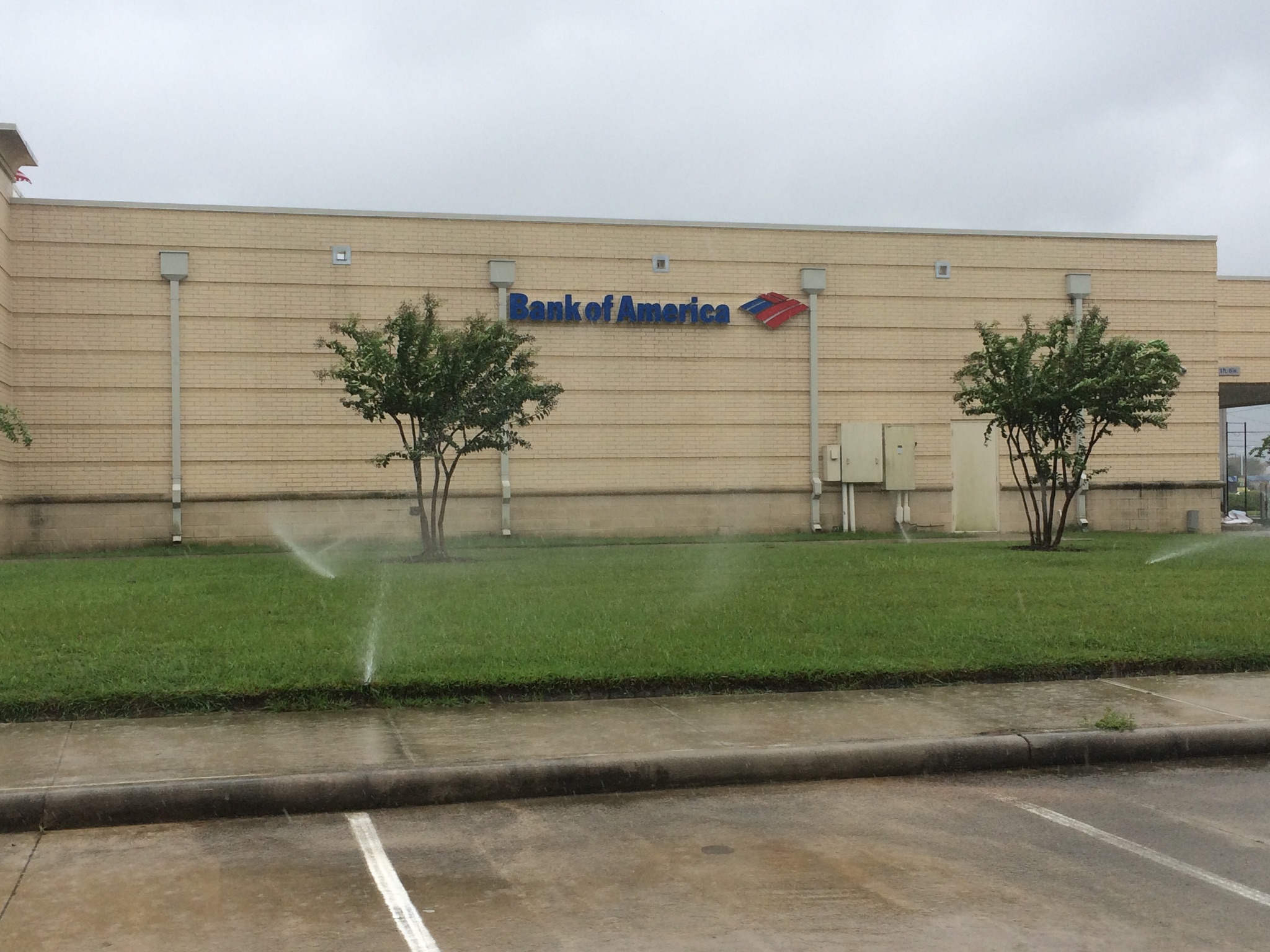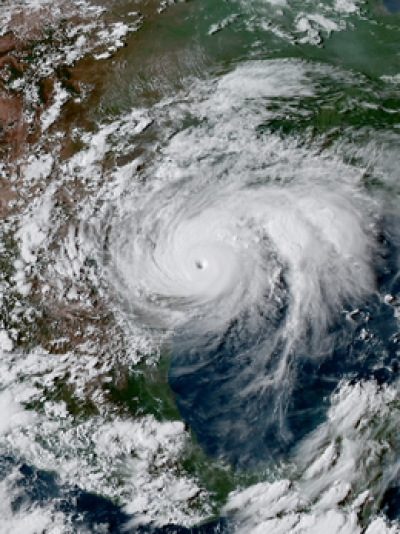Way back in 2008, we experienced our first hurricane, which was pretty devastating: over 100 dead in the US and $37.5 billion in damages, making it the sixth costliest in US history, at the time Katrina was the costliest, at $108 billion. Little did we know that when Hurricane Harvey was identified on August 13 (at that point, a tropical storm), we would have a new record holder. Hurricane Harvey ended up costing $125 billion and 90 lives were lost in the US alone.
Hurricane Harvey's impact was quite different from Hurricane Ike's. Ike made landfall in Galveston as a Category 2 storm (sustained winds of 110mph) and caused extensive wind damage, including widespread loss of electricity (http://sevenflagsovertexas.me/index.php/blog/item/38-astros-beat-braves-and-power-returns-all-in-one-night) and damage to buildings. The damage from the storm surge, from Galveston Bay all the way to downtown Houston was just as significant, if not worse. Here's the water line at T-Bone Tom's restaurant in Kemah:
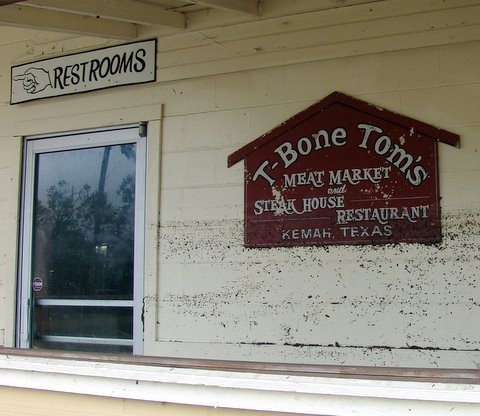
Hurricane Harvey made landfall in Rockport as a Category 4 storm (sustained winds of 130mph) and then proceeeded to become a tropical storm again, moving very slowly over Texas, dropping huge volumes of rain everywhere. Over 50 inches of rain (or 33 trillion gallons) fell during the storm, setting a new record for the continental US. Once again Texas proves it likes to do everything bigger than the other states: The closest to this is Florida's record of 45 inches. Since a gallon of water weighs 8.34lbs, 275 trillion pounds of water fell, enough to push the earth's crust down by 2 centimeters.
Naturally, it takes quite a while for 33 trillion gallons of water to disperse. Scenes like this were common for days afterwards, with streets closed to anything other than watercraft:
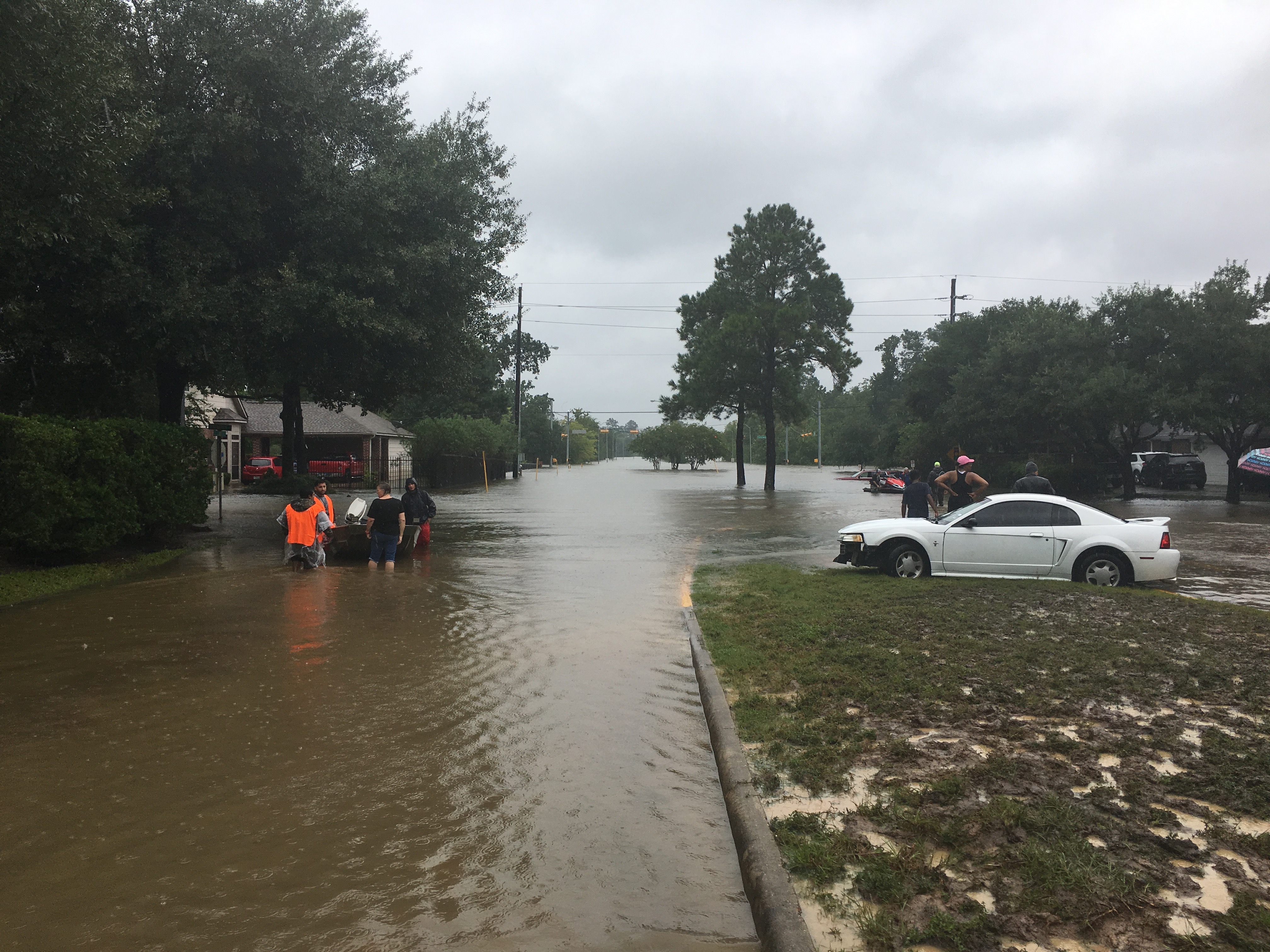
The worst sights were still to come. Once people could move back into their homes, they had the task of assessing the damage due to flooding (approximately 126,000 homes suffered damage). Water levels of 4 feet were not uncommon, requiring a complete gutting of many homes generating piles of trash like this:
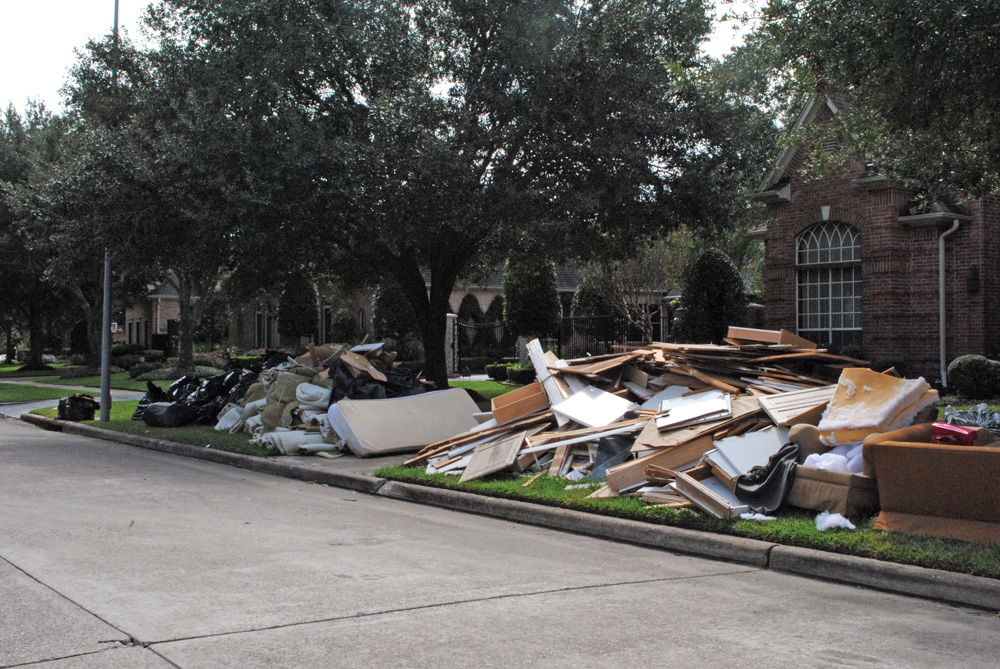
Across Texas there was 200 million cubic yards of debris, enough to fill 125 football stadiums.
People quickly found a use for all that extra water. Bank of America was watering their grass as soon as they could:
